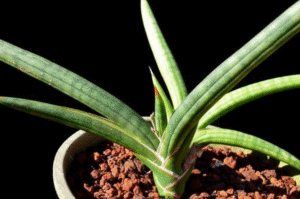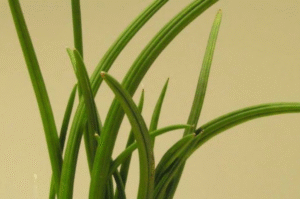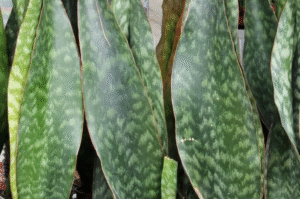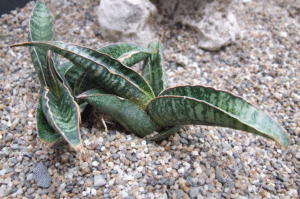Sansevieria Cylindrica, often called the African spear plant or cylindrical snake plant, is a unique indoor plant loved for its clean lines, hardy nature, and minimal care needs. Whether you’re decorating a modern office or brightening up your living room, this plant adds a sculptural and low-maintenance touch to your space.
In this care guide, you’ll learn everything you need to know about growing and maintaining Sansevieria Cylindrica, from light and water requirements to temperature, soil, and more.

What Makes Sansevieria Cylindrica Stand Out?
Sansevieria Cylindrica stands apart from other snake plants due to its smooth, cylindrical leaves that shoot upward like spears. Its minimalist look works well in contemporary spaces, and it doesn’t demand much attention, perfect for both plant lovers and those new to indoor gardening.
This plant is a champion of survival. It tolerates dry spells, doesn’t mind low light, and resists most common pests. If you forget to water now and then, no problem — it won’t hold a grudge.

Sansevieria Cylindrica Light Needs
Lighting plays a key role in your Cylindrica’s growth and health. Fortunately, this plant is incredibly adaptable.
Best Lighting Conditions:
- Thrives in bright, indirect sunlight. A spot near a curtain-covered window works best.
- It handles low light well, making it suitable for places like hallways or offices.
- Avoid placing it in direct afternoon sun; too much exposure can burn the leaves.
Pro Tip:
Rotate the plant every few weeks so that all sides receive light evenly. This helps maintain its symmetrical shape and upright growth.
Watering: Keep It Simple
Sansevieria Cylindrica stores moisture in its thick leaves, so it doesn’t need frequent watering. Overwatering is the most common mistake that can harm this plant.
When to Water:
- In warmer months: About once every 2–3 weeks.
- In cooler months, cut back to once a month or only when the soil is bone dry.
Helpful Watering Tips:
- Use your finger to check the top 2 inches of soil—only water if it feels completely dry.
- Always use a pot with drainage holes.
- Discard any excess water from the saucer to avoid root rot.
Soil: Drainage is Essential
Using the right soil can make or break your plant’s health. Dense, moisture-retaining soil increases the risk of rot.
Ideal Soil Mix:
- A succulent or cactus potting mix is ideal.
- Alternatively, combine regular potting soil with sand or perlite to create fast-draining soil.
This setup ensures the roots get just enough moisture without sitting in wet conditions.
Temperature & Humidity
Sansevieria Cylindrica performs best in consistent, warm environments. Though it’s tough, it has its preferences.
Ideal Temperature:
- Grows well between 60°F and 85°F (15°C to 29°C).
- Avoid exposure to temperatures below 50°F (10°C), which can damage the leaves.
Humidity Levels:
- Average indoor humidity (around 40–50%) works perfectly.
- No need for misting or special humidifiers.
Extra Tip:
Place your plant away from cold drafts, heaters, and air conditioners to avoid sudden shifts in temperature.
Feeding the Plant: Use Fertilizer Sparingly
Although not a heavy feeder, a small dose of fertilizer during the growing season can support healthy growth.
Best Fertilizer Routine:
- Use a diluted all-purpose or succulent fertilizer once every 6–8 weeks in spring and summer.
- Skip fertilizing during fall and winter when the plant is dormant.
Avoid using strong fertilizers or applying them too frequently, as that can stress the plant.
Pruning and General Maintenance
Sansevieria Cylindrica doesn’t require much trimming, but occasional maintenance helps keep it looking neat and attractive.
Quick Care Tasks:
- Trim off yellow or damaged leaves using clean scissors.
- Gently wipe leaves with a damp cloth to remove dust and boost shine.
- If the plant becomes too crowded or root-bound, it’s time to repot or divide it.
Typically, repotting is needed every 2–3 years.
Common Issues and Simple Fixes
Though low-maintenance, your Sansevieria Cylindrica may show signs of distress if neglected or overpampered.
1. Yellowing Leaves
- Likely Cause: Overwatering or soggy soil.
- Fix: Allow the soil to dry and ensure proper drainage.
2. Wrinkled or Soft Leaves
- Likely Cause: Underwatering.
- Fix: Water thoroughly and adjust your watering schedule.
3. Brown Leaf Tips
- Likely Cause: Low humidity, salt buildup, or chemical-heavy water.
- Fix: Use filtered or distilled water and avoid over-fertilizing.
4. Mushy Base or Roots
- Likely Cause: Root rot due to too much moisture.
- Fix: Remove affected areas and repot in dry, fresh soil.
Propagating Sansevieria Cylindrica
This plant is easy to propagate, making it a great option if you want to multiply your collection or share it with friends.
Two Simple Methods:
- Division: Separate the plant at the root level. Each section should have roots and at least one healthy leaf.
- Leaf Cuttings: Cut a leaf into 3–4 inch pieces. Let them dry for 1–2 days, then plant in dry soil and water sparingly.
Best propagation results happen in spring or summer when the plant is actively growing.
Is Sansevieria Cylindrica Safe for Pets?
Sansevieria Cylindrica is toxic to pets if ingested. It contains compounds that can cause vomiting, drooling, or diarrhea in cats and dogs. Keep it in a location that pets can’t reach.
Quick Reference Table
| Care Aspect | Recommended Approach |
| Lighting | Bright, indirect sunlight; tolerates low light |
| Watering | Every 2–3 weeks, let the soil dry thoroughly |
| Soil Type | Well-draining mix (cactus/succulent soil) |
| Temperature | 60°F–85°F (15°C–29°C) |
| Humidity | Normal indoor levels; no misting needed |
| Fertilizer | Light feeding every 6–8 weeks in spring/summer |
| Toxicity | Toxic to pets if ingested |
Frequently Asked Questions (FAQs)
How tall can Sansevieria Cylindrica grow?
With proper care, it can reach heights of 2 to 4 feet, and sometimes taller indoors.
Does Sansevieria Cylindrica need sunlight every day?
It doesn’t require direct sunlight, but it performs best with consistent indirect light. Low light is fine, but growth may slow.
How often should I change pots?
Every 2 to 3 years, or sooner if the plant becomes root-bound or the pot looks too small.
Why are the leaves folding inward?
This is often a sign of underwatering or low humidity. Try watering more frequently and moving the plant to a stable indoor environment.
Conclusion
Sansevieria Cylindrica offers the perfect mix of visual appeal and low-maintenance care. Its sculptural look fits seamlessly into any room, and it’s one of the easiest indoor plants to keep alive.
By following these simple guidelines (light, water, temperature, and soil care), you’ll ensure your Cylindrica thrives year-round. Whether you’re new to indoor gardening or just looking for a fuss-free addition to your collection, this hardy plant will not disappoint.
Bring one home, give it a bright spot, and let it show off its elegance with minimal effort.






